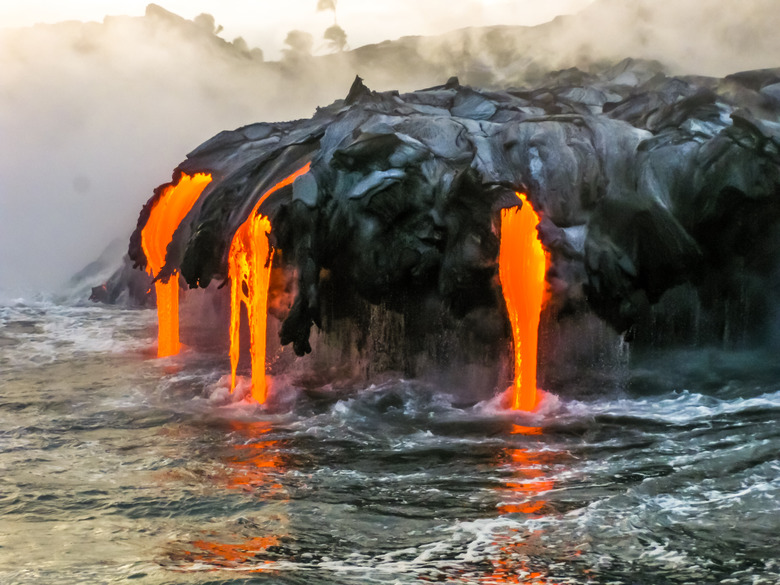10 Facts About Plate Tectonics
The theory of plate tectonics is a widely accepted scientific theory that has wide application. Plate tectonics explain how mountains formed millions of years ago as well as how volcanoes and earthquakes occur. Plate tectonics describes why so many of the minerals extracted at or below Earth's surface tend to be highly concentrated in specific areas. Plate tectonics also confirms certain patterns of biological evolution that occurred as a result of continental drift.
Definition
Definition
Plate tectonics is the theory explaining the movement of the earth's plates and the processes that occur at their boundaries.
Plates
Plates
Plates are variously-sized (approximately 60 miles thick) areas of the earth's crust and mantle (also called the lithosphere) that move slowly around the mantle's asthenosphere and are predominantly responsible for the earth's volcanoes and earthquakes. The asthenosphere is a portion of the mantle that consists of extremely hot, plastic-like rock that is partially melted.
Divergent Plate Boundary
Divergent Plate Boundary
The lithospheric, the Earth's crust and upper mantle, includes three plate boundaries, the first of which is a divergent plate boundary. On a divergent plate boundary, the plates move apart in opposite directions.
Convergent Plate Boundary
Convergent Plate Boundary
On the second type of boundary, a convergent boundary, the plates are pushed together. Convergent plate boundaries help create mountains and volcanoes.
Transform Fault
Transform Fault
The third type of plate boundary is a transform fault. On a transform fault, the plates move in opposite but parallel directions along a fracture. In other words, the plates slide past one another.
The Earth's Core
The Earth's Core
The innermost part of the Earth is called the core. The core is extremely hot (4,300 degrees Celsius) and is made mostly of iron. The core is mostly solid but is surrounded by a liquid molten material.
The Earth's Mantle
The Earth's Mantle
The thickest of the Earth's three zones, the mantle surrounds the core and is mostly solid rock. A small portion of the mantle, the asthenosphere, is very hot (approximately 3,700 degrees Celsius), partially melted rock.
The Earth's Crust
The Earth's Crust
The Earth's crust is the outermost and thinnest layer of the Earth's three zones. It consists of the continental and oceanic crusts .
Convection Cells
Convection Cells
Convection cells are believed to be what helps keep the plates moving. The plates rest on the constantly moving, plastic-like rock of the lower mantle (asthenosphere) and move in a similar fashion to convection in the atmosphere.
Continental Drift
Continental Drift
The theory of plate tectonics developed in the 1960s from an earlier theory called continental drift. Continental drift was introduced by Alfred Lothar Wegener in 1912, and it claims that the continents were once connected and that they gradually drifted apart over millions of years. Plate tectonics is significant because it explains how continental drift can occur.
References
- "Living in the Environment"; G. Tyler Miller, Jr., Ph.D.; 2002
- Extreme Science: How Plate Tectonics Works
- Moorlandschool: Convection
Cite This Article
MLA
Mack, John. "10 Facts About Plate Tectonics" sciencing.com, https://www.sciencing.com/10-plate-tectonics-7714571/. 13 March 2018.
APA
Mack, John. (2018, March 13). 10 Facts About Plate Tectonics. sciencing.com. Retrieved from https://www.sciencing.com/10-plate-tectonics-7714571/
Chicago
Mack, John. 10 Facts About Plate Tectonics last modified August 30, 2022. https://www.sciencing.com/10-plate-tectonics-7714571/
